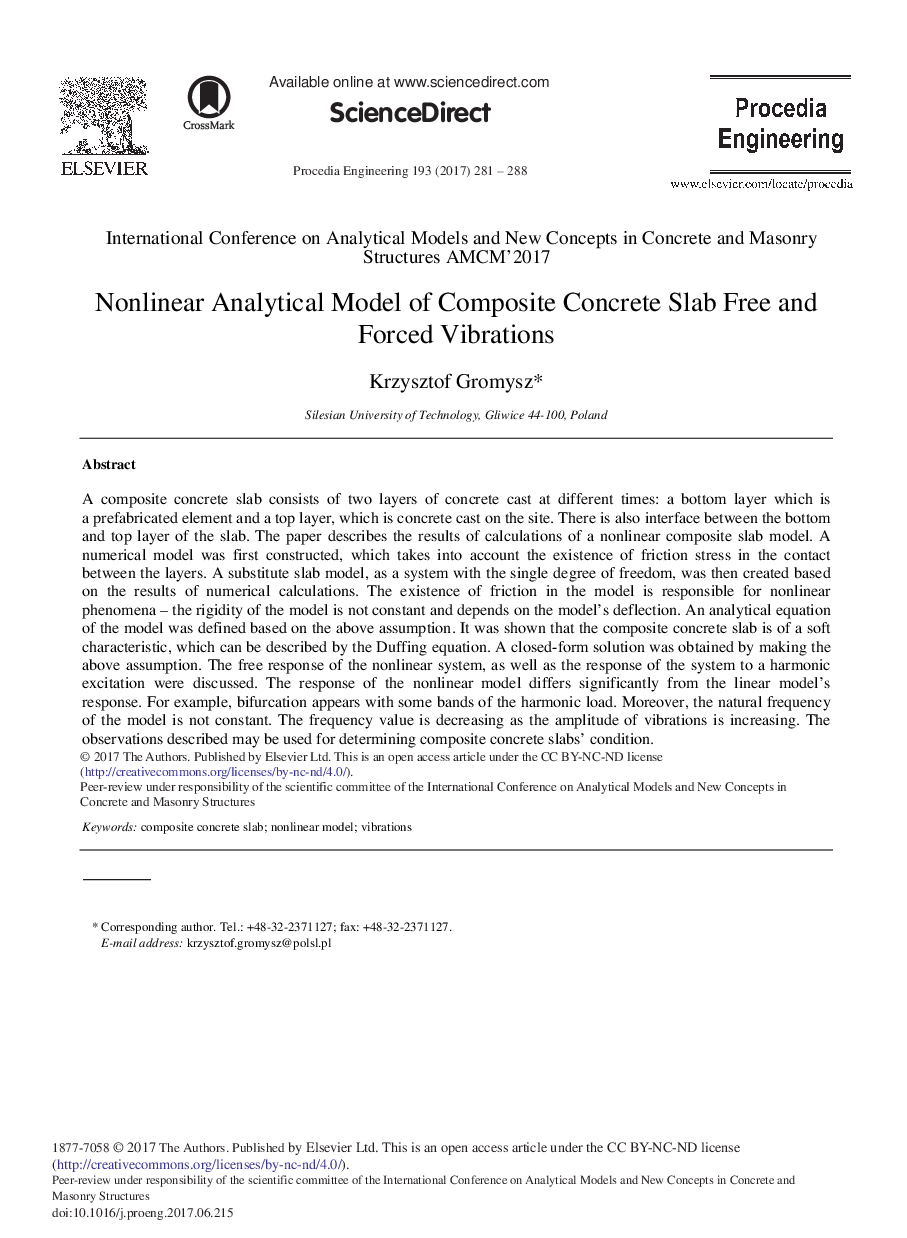| کد مقاله | کد نشریه | سال انتشار | مقاله انگلیسی | نسخه تمام متن |
|---|---|---|---|---|
| 5027052 | 1470633 | 2017 | 8 صفحه PDF | دانلود رایگان |
عنوان انگلیسی مقاله ISI
Nonlinear Analytical Model of Composite Concrete Slab Free and Forced Vibrations
ترجمه فارسی عنوان
مدل تحلیلی غیر خطی از ارتعاشات رایگان و اجباری بتن کامپوزیتی
دانلود مقاله + سفارش ترجمه
دانلود مقاله ISI انگلیسی
رایگان برای ایرانیان
کلمات کلیدی
اسلب کامپوزیت بتنی، مدل غیر خطی، ارتعاشات،
موضوعات مرتبط
مهندسی و علوم پایه
سایر رشته های مهندسی
مهندسی (عمومی)
چکیده انگلیسی
A composite concrete slab consists of two layers of concrete cast at different times: a bottom layer which is a prefabricated element and a top layer, which is concrete cast on the site. There is also interface between the bottom and top layer of the slab. The paper describes the results of calculations of a nonlinear composite slab model. A numerical model was first constructed, which takes into account the existence of friction stress in the contact between the layers. A substitute slab model, as a system with the single degree of freedom, was then created based on the results of numerical calculations. The existence of friction in the model is responsible for nonlinear phenomena - the rigidity of the model is not constant and depends on the model's deflection. An analytical equation of the model was defined based on the above assumption. It was shown that the composite concrete slab is of a soft characteristic, which can be described by the Duffing equation. A closed-form solution was obtained by making the above assumption. The free response of the nonlinear system, as well as the response of the system to a harmonic excitation were discussed. The response of the nonlinear model differs significantly from the linear model's response. For example, bifurcation appears with some bands of the harmonic load. Moreover, the natural frequency of the model is not constant. The frequency value is decreasing as the amplitude of vibrations is increasing. The observations described may be used for determining composite concrete slabs' condition.
ناشر
Database: Elsevier - ScienceDirect (ساینس دایرکت)
Journal: Procedia Engineering - Volume 193, 2017, Pages 281-288
Journal: Procedia Engineering - Volume 193, 2017, Pages 281-288
نویسندگان
Krzysztof Gromysz,
